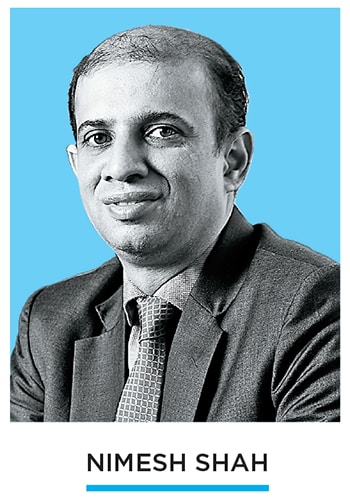
Why asset allocation will matter in 2021
As we embark into the new year, the ultimate guide to investing in the new normal: asset allocation
 Image: Shutterstock
Image: ShutterstockThe year 2020 will go down in the history books as a year of global public health crisis which led to an unprecedented worldwide response, driving equity markets to their lifetime highs. The Indian equity market saw one of the shortest bear markets in its recorded history followed by the sharpest recovery, a rally which still continues, albeit some volatility basis news and fund flows. The rallies have been largely possible thanks to the massive fiscal stimulus rolled out by developed market central banks along with the sentiment booster which came in the form of positive news in terms of vaccine development.

The road ahead
At this juncture, it is important to grasp the fact that Indian equity markets are in the midst of a ‘developed world central bank-driven bull market’. It is very likely that the current market trend may continue in the near-to-medium term as the markets may continue to see a steady stream in terms of FII inflows, thanks to the Fed continuing to pump in trillions of dollars into the financial system. As long as flows continue, the chances of a major correction in equity markets remains diminished. What can dent the market in the meanwhile, especially in the Indian context, is the rise in crude oil prices. That said, this view is subject to review if any of the following plays out: Crude oil crosses $60/barrel, US 10-year yield surpasses 1.5 percent, surplus liquidity with the Reserve Bank of India (RBI) comes off sharply or in case of global money market funds seeing their asset size reduce sharply.
Value-themed funds
Given that equity as an asset class has rallied continuously, one has to be cautious. At such times, adhering to asset allocation is of absolute importance. Spread investments across equity, debt, gold etc. rather than going overboard on any one particular asset class. This will ensure that whenever there is any correction, the portfolio is not adversely impacted. One can also achieve this through investing in asset allocation schemes which tend to gain from market volatility by participating in the rally through equity allocations while the presence of debt limits downside to the portfolio.
For those looking to invest in equity schemes, one can consider investing in funds with a value bias. We believe the divergence between value and growth stocks still continues to prevail, though it has reduced with time. Value as a theme still continues to be relatively attractive. We believe there are still pockets of opportunities in the value space providing good dividend yield and that have better earnings visibility. Hence, we recommend investors to take exposure to schemes with value bias.
Meanwhile, mid and small caps have underperformed large caps in the last couple of years and that trend is expected to reverse. In a low interest rate environment, small- and mid-cap companies stand to benefit the most on account of low cost of capital.
In the quarters ahead, it is very likely that the profitability of fundamentally strong companies in the broader markets is likely to improve and soon enough the same will be reflected in their stock price as well. So, if an investor is ready to stay put for the next five years, one can consider investing into diversified funds, but through the SIP route.
The other investment which investors can consider is funds which take a call based on the economic macros. This is where the Business Cycle Fund comes in. Here, the objective is to invest across two to five sectors which we believe will stand to gain based on where they are placed in terms of their respective business cycles.
At a time when the economy is growing at a faster pace, the aim of the fund will be to invest in sectors that are closely related to the economy and when there are times of economic slump, the portfolio will be positioned to move towards the defensives as a means to limit portfolio downside.
For those looking for opportunities to invest in international markets, it is time to strike a cautious note, especially if one is looking to invest into the US market. We believe the US market is heading to a bubble zone and a correction could play out anytime in the future. So, one could consider investing into non-US, global equity. One can opt for funds or Fund of Funds which invest across different international markets and across different geographies.
Low probability of rate cuts
Thus far in calendar year 2020, we have seen RBI cutting rates aggressively by 115 basis points. This has been coupled with various measures with an aim to support growth and ease the liquidity situation. Going forward, we assign low probability for rate cuts due to a change in growth and inflation dynamics.
The surplus liquidity in the system has found its way to the credit markets with yields across the interest rate curve cooling off considerably. As a result, the effective return at the shorter end of the curve does not look very encouraging. However, we believe the non-AAA corporate bond space may have some pockets that offer better carry and margin of safety relative to AAA and money market rates.
Going forward, accrual income shall be a significant component of the return of bond investors and returns from capital appreciation may take a back seat. Due to better term premium and favourable credit spread, we are positive on schemes which can actively manage duration to benefit from the steepness in the yield curve and schemes which can take exposure into spread assets (AA corporate bonds), which may benefit from better accrual income.
We continue to remain positive on the credit risk space as valuations remain attractive. The elevated yields in the accrual space with high spread over repo provides a good margin of safety.
● The writer is managing director and CEO, ICICI Prudential AMC
(This story appears in the 30 November, -0001 issue of Forbes India. To visit our Archives, click here.)




